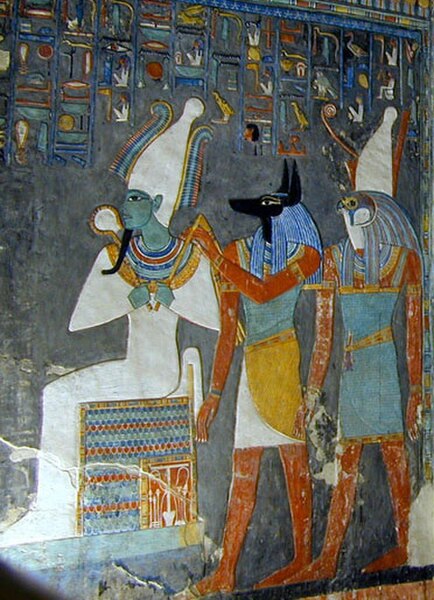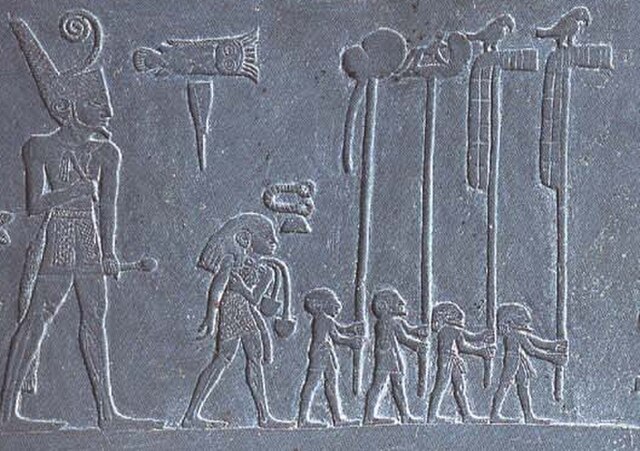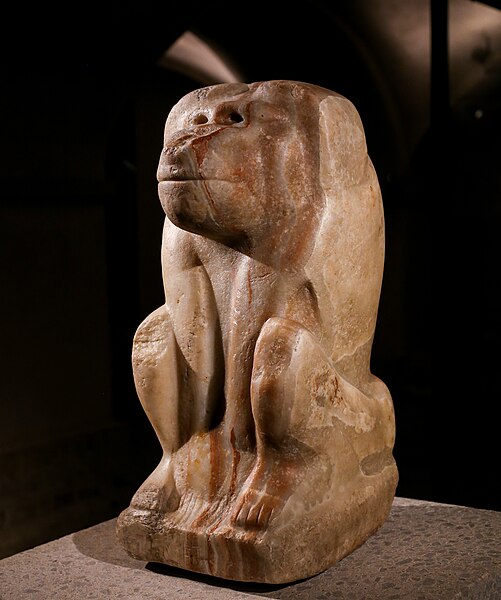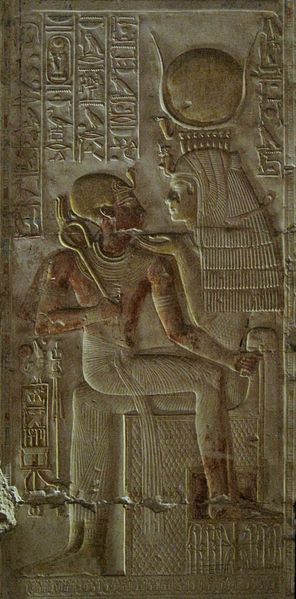Thoth is an ancient Egyptian deity. In art, he was often depicted as a man with the head of an ibis or a baboon, animals sacred to him. His feminine counterpart was Seshat, and his wife was Ma'at. He was the god of the Moon, wisdom, knowledge, writing, hieroglyphs, science, magic, art and judgment.
Thoout, Thoth Deux fois Grand, le Second Hermés, N372.2A, Brooklyn Museum
Relief in the Temple of Seti I (Abydos) of Thoth giving the ankh to pharaoh Seti I.
Thoth depicted with a book and stylus, and a moon crown.
Thoth depicted with the moon-disk on his head in (KV9) Tomb of Ramesses V.
Ancient Egyptian deities are the gods and goddesses worshipped in ancient Egypt. The beliefs and rituals surrounding these gods formed the core of ancient Egyptian religion, which emerged sometime in prehistory. Deities represented natural forces and phenomena, and the Egyptians supported and appeased them through offerings and rituals so that these forces would continue to function according to maat, or divine order. After the founding of the Egyptian state around 3100 BC, the authority to perform these tasks was controlled by the pharaoh, who claimed to be the gods' representative and managed the temples where the rituals were carried out.
The gods Osiris, Anubis, and Horus in the Tomb of Horemheb (KV57) in the Valley of the Kings
Narmer, a Predynastic ruler, accompanied by men carrying the standards of various local gods
Statue of the baboon god Hedj-Wer, inscribed with the name of king Narmer
Isis, a mother goddess and a patroness of kingship, holds Pharaoh Seti I in her lap.








